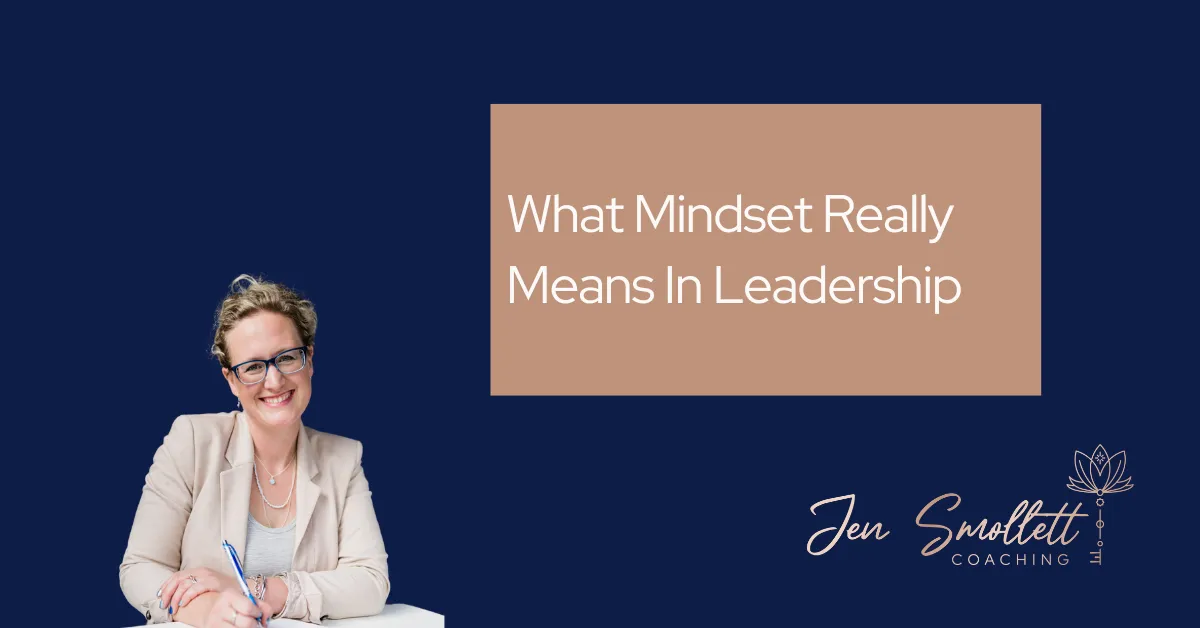
What mindset really means in leadership
What mindset really means in leadership
You’ve probably heard the word mindset used in leadership conversations, personal development, or even performance reviews. But it’s often used without much clarity around what it actually means or why it matters.
Mindset is more than just a positive attitude.
It shapes how you interpret challenges, respond to failure, and show up as a leader. And when you understand your own mindset, you unlock powerful insight into how you lead, grow, and connect with others.
Fixed mindset vs growth mindset
Psychologist Carol Dweck introduced the idea of fixed and growth mindsets, and it remains one of the most practical tools for leadership development.
A fixed mindset says:
“I’m either good at this or I’m not.”
“Feedback is a threat.”
“If I struggle, it means I’m not cut out for this.”
A growth mindset says:
“I can learn and improve.”
“Feedback is useful, even if it stings.”
“Setbacks are part of the process, not a sign of failure.”
The difference between these two perspectives has a huge impact; not just on your own confidence and resilience, but on how your team experiences you as a leader.
Mindset and confidence
If you are operating from a fixed mindset, confidence will always feel conditional. You might feel confident when you succeed and deflated when you make a mistake. Your inner voice might be overly critical or quick to compare.
A growth mindset builds a different kind of confidence: one that is grounded in curiosity and compassion.
You begin to trust that you can figure things out, even when the outcome is uncertain. And you stop tying your worth to whether you got everything right on the first try.
Mindset and resilience
Mindset also affects how you recover from challenges. A fixed mindset might lead you to internalise failure or avoid risks. A growth mindset allows you to pause, reflect, and adjust. It strengthens your ability to learn and lead through difficulty.
This is especially powerful in leadership, where you are constantly navigating the unknown, holding space for others, and making decisions under pressure.
Resilience doesn’t come from pretending everything is fine. It comes from believing you can learn from what happens and move forward with intention.
Mindset and your team
As a leader, your mindset is contagious. When you model a fixed mindset, your team may become afraid to speak up, take initiative, or share new ideas. They may fear being wrong or disappointing you.
When you model a growth mindset, you create psychological safety. Your team sees that it is safe to experiment, give feedback, and grow together. You build a culture of trust, accountability, and shared learning and that’s where the real impact happens.
You can shift your mindset
Mindset is not fixed. It is not something you are born with or stuck with. You can cultivate a more expansive mindset by practising reflection, being curious about your triggers, and building your tolerance for discomfort and uncertainty.
Inside Unstoppable Leaders, I support people to build the mindset that makes leadership more sustainable.
Over six months, we focus on developing the confidence, resilience, and self-awareness that allows you to lead without needing to be perfect.
If you are ready to explore what is possible when you lead with belief and flexibility, you can learn more here.
